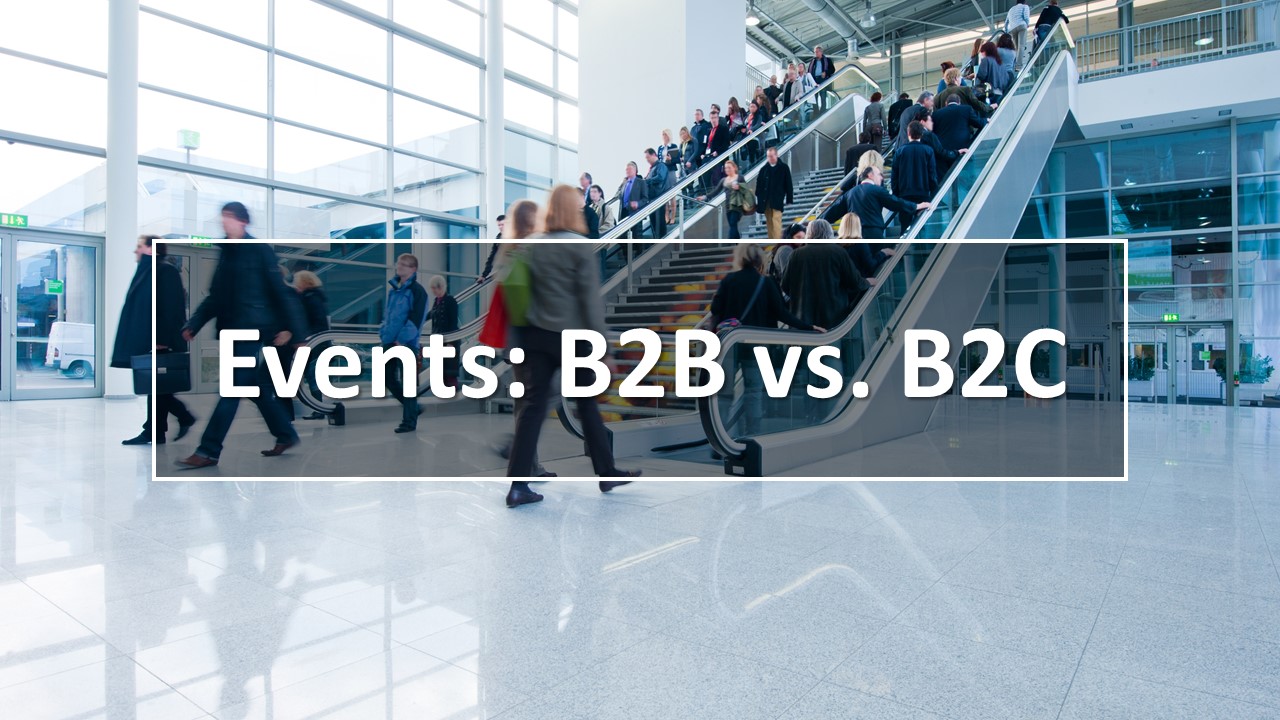The Difference Between B2B and B2C Events
We work on both B2B and B2C tradeshow and event programs. Most customers just target one audience or the other. But every now and then one decides to test the waters with another audience. These days it’s typically a company that sells through distribution and/or retail who wants to try selling direct to its end users – the consumer. Their first question? What’s the difference between selling to a B2B buyer and a B2C one at a tradeshow? Here’s our quick answer.
First, there’s no reason to be scared selling to a new audience as long as your “go-to-show strategy” takes into account the important differences between audiences and the way they buy. We’ll break them down for you in terms of who’s buying, show messaging and show sales process.
The Buyers
In a B2B purchase there is usually more than one buyer involved, each with a different set of considerations and motivations. Procurement, marketing and IT people may all be involved and naturally think pretty differently. They’re all looking for a long-term relationship with a supplier – not a one time buy. Their purchase decision is going to be more rationally driven based on what’s best for the business (and protecting their job). Yet an emotional connection with the brand matters – meaning beyond the facts, you should also give them a reason to like you.
The B2C buyer is usually one person or maybe a couple. They’re interested in a one-off purchase – not a relationship. Their purchase may be driven a little less by rational considerations and a little more by emotion, impulse and inspiration. But just like the B2B buyer, getting them to really like your brand is important.
Show Messaging
The B2B buyers have probably already researched you brand and put you in their “acceptable array of vendors.” This means building brand awareness and confidence isn’t your biggest issue. Telling them why your product is better and how it is going to help their business is. So make that the focus of what happens in your booth. And try to do it in the form of stories of how you have helped other companies (vs. just dry statistics). Mix in the opinions and reviews of other users and industry experts. And the fact that multiple people are involved in the decision process – each with their own concerns – means you should have deep and varied stories available to address each audience type. As for marketing in and around the show, social media is generally not a good way to talk to B2B buyers. Email works better.
Depending on your overall brand awareness, a B2C buyer may not know you. If so telling them who you are and giving them a reason to have confidence in your brand can be important. They often need and want less information about your product and what makes it better than a B2B buyer. So shorter, punchy messaging is the way to go. They do respond to social media marketing, peer reviews and to celebrity influencers.
Show Sales Process
For most B2B purchases the path to purchase is a longer journey with more steps and people involved. In part because there is often a higher lifetime transaction value with the possibility of many transactions over time. Decisions are not typically going to be made at the show. So, booth staffers should be experienced at a consultative selling process, addressing different audience needs and landing a post show followup meeting or meetings.
For B2C it’s probably a shorter path and a one-time purchase – like a pair of running shoes, a new roof, a set of wireless ear buds – with a lower transaction value. The show goal is either a sale on the show floor, or a lead to be given to someone to follow up on – for instance one of your retailers if you have them. Booth staffers should be more like retail salespeople than consultants.
Conclusion
Your B2B booth and your B2C one should probably feel and work pretty differently. And the best way to achieve this difference is to take into account the differences between the audiences and their sales journeys. These differences should impact four key areas of your show plan:
Your business goals at the show – what you expect to walk away with
The amount and types of messaging and information you have on hand to support sales
The ratio of information vs. entertainment you offer and your overall “tone” (how business-like you are)
The skill sets of the people you bring to staff your booth
And in both cases remember that both audiences want a reason to like your brand – so give them one (just maybe a little different for each audience).
